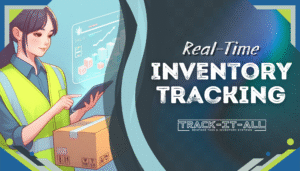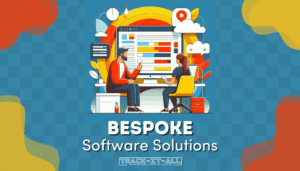The competitive landscape of South African businesses is rapidly evolving, and with the surge in the pursuit of talent, companies are increasingly adopting innovative HR solutions. In the heart of these advancements are HRIS and ATS software systems—a duo that is redefining recruitment and employee management across varied industries. Understanding the HRIS ATS definition becomes critical as these systems provide a strategic foundation for harnessing a workforce that’s both skilled and committed. In a country where economic growth is closely tied to workforce capabilities, leveraging the power of HR technology is not just an option, but a necessity for sustainable growth.
These technological frameworks offer unprecedented support in automating the complexities of human resources tasks, thereby enabling South African companies to focus on nurturing a culture that puts people first. Consequently, the role of HRIS and ATS software extends beyond mere operational assistance; it is a pivotal element in the strategic positioning of businesses as they navigate the intricate dance of attracting and retaining top-tier talent.
Key Takeaways
- HRIS and ATS systems are integral to the technological advancement of South African businesses.
- Automated HR tasks through HRIS and ATS enhance employee and candidate experiences.
- Adopting these systems is key to staying competitive in the South African job market.
- HRIS ATS definition is synonymous with strategic growth and workforce optimization.
- The integration of these software systems elevates company culture and talent retention.
- Understanding and utilizing HRIS and ATS is crucial for HR innovation and leadership.
The Importance of HRIS and ATS in Modern Recruitment
The evolving dynamics of the global workforce have ushered in an era where the Benefits of HRIS and ATS systems are not only desired but necessary for streamlined recruitment processes. HRIS and ATS integration has marked a watershed moment for companies, especially in the competitive South African job market, where securing top talent can often tip the scales in favor of one organization over another.
Understanding the inherent Benefits of HRIS and ATS begins with recognizing that they serve as the twin pillars supporting the modern recruitment strategy. On the one hand, HRIS empowers HR managers with comprehensive employee data and analytics, when on the other, ATS simplifies the candidate tracking process from application through to hire. When integrated, they offer a seamless transition from one stage to the other.
- Optimized Recruitment Operations: HRIS and ATS integration accelerates the hiring process, enabling businesses to respond to human resource needs promptly and efficiently.
- Improved Candidate Experience: A streamlined recruitment process facilitated by ATS, alongside the comprehensive data management capabilities of HRIS, contributes to a positive brand image in the job market.
- Data-Driven Decision Making: Integrating these systems facilitates the collection and analysis of recruitment metrics, empowering leaders to make informed human resource decisions.
The table below illustrates a comparison of key functions before and after the integration of HRIS and ATS, highlighting the improvements in processes:
| Function | Pre-Integration | Post-Integration |
|---|---|---|
| Applicant Tracking | Manual entry and tracking | Automated workflow |
| Employee Onboarding | Isolated data transition | Unified and seamless data transfer |
| Data Analysis | Disparate systems analysis | Cohesive analytics for robust insights |
| Record Keeping | Multistep verification process | Integrated verification with single-entry point |
Investing in HRIS and ATS integration not only positions businesses to capitalize on a holistic view of their recruitment and employee management strategies but also exemplifies a commitment to a technology-driven, data-centric approach to human resource management. As South Africa’s job market continues to grow in both scale and competitiveness, the adoption of these integrated systems is less a luxury and more a necessity for organizations serious about talent acquisition and retention.
What is HRIS and ATS systems?
In today’s fast-evolving job market, understanding the nuances of HR technology, especially HRIS and ATS, is critical for South African businesses aiming to optimize their human resource management and recruitment processes. These HRIS and ATS tools not only serve distinct functions but also complement each other when integrated, marking a transformative shift in the HR landscape.
Defining HRIS: A Tool for Employee Management
An HRIS, or Human Resource Information System, is a comprehensive suite designed for effective employee management. This HR technology encompasses a broad array of HRIS features, including but not limited to, employee records, payroll, benefits administration, and performance analysis. With its expansive capabilities, an HRIS has become an indispensable asset in managing the employee lifecycle efficiently.
Understanding ATS: Streamlining the Hiring Process
Conversely, an Applicant Tracking System (ATS) is an HRIS tool tailored to refine the hiring process. It offers a streamlined approach to manage job postings, candidate applications, screening, and the interview process. Focused primarily on talent acquisition, ATS features enable recruiters to navigate the complexities of hiring with greater agility and insight.
HRIS vs ATS: Delineating the Distinctions
Although HRIS and ATS may share some overlapping functionalities, the core difference lies in their primary audience and purpose. The pivotal HRIS vs ATS distinction is that an HRIS is utilized to manage current employees within the organization, while an ATS is employed by talent acquisition teams to engage future potential hires. The synergy between HRIS and ATS features when these systems are integrated can lead to a more robust, data-centric approach to both employee management and recruitment.
| Function | HRIS | ATS |
|---|---|---|
| Primary Purpose | Employee management | Talent acquisition |
| Key Features | Employee records, Payroll, Benefits administration | Job postings, Applicant tracking, Candidate screening |
| Target User | HR professionals | Recruiters, Hiring managers |
| Benefits | Improved internal HR processes, Data centralization | Efficient candidate management, Enhanced hiring quality |
The selection and integration of HRIS and ATS tools should hence be informed by the organization’s specific HR objectives and challenges. A cohesive implementation of both HRIS and ATS represents a strategic investment toward a more dynamic and effective human resource framework, capable of sustaining growth and fostering a capable, committed workforce.

Key Features of Effective HRIS and ATS Software
When exploring HRIS and ATS comparison, organizations must emphasize the selection of features that address their specific recruitment and employee management needs. The seamless HRIS and ATS implementation provides a unified solution driving efficiency and strategic HR management. Let’s dissect the elements that make for influential HRIS and ATS platforms.

In the context of Applicant Tracking Systems (ATS), the functionality can range from simplifying candidate communication to enriching the applicant pool. Features such as AI-based sourcing revolutionize how recruiters identify prospective talent, transcending geographical and networking limitations. Application sorting, alongside resume storage, boosts organizational capabilities in managing large volumes of candidate information, while interview scheduling streamlines recruitment operations.
On the flip side, Human Resource Information Systems (HRIS) are the backbone of internal workforce management. Central to HRIS excellence is centralized data management which grants HR professionals access to employee information in a consolidated platform. This functionality is complemented by comprehensive employee lifecycle tracking, from onboarding to retirement, and meticulous benefits administration.
An integrated HRIS and ATS system champions data interoperability and plays a pivotal role in informed decision-making. Below is a comparison highlighting the synergistic components of both systems:
| HRIS Features | ATS Features |
|---|---|
| Centralized employee database | Automated resume parsing |
| Payroll and benefits integration | AI-driven candidate sourcing |
| Performance management tools | Collaborative hiring interfaces |
| Legal compliance tracking | Customizable job posting templates |
| Analytics and reporting dashboards | Communication and feedback loops |
The convergence of these platforms equips South African businesses with the capability to not only attract top talent but also to cultivate and retain a committed workforce. The HRIS and ATS comparison and subsequent integration strategy ensures that enterprises are geared towards a future-proof HR landscape.
The Intersection of HRIS and ATS: Integration Benefits
As the landscape of Human Resources technology evolves to meet the dynamic needs of South African businesses, the synergy between Human Resource Information Systems (HRIS) and Applicant Tracking Systems (ATS) has become more crucial than ever. The integration of these systems brings forth powerful capabilities, leading to substantial advancements in how organizations manage their human capital. Below, we explore the singular advantages yielded from this integration.
Enhancing Data Consistency and Accuracy
The consolidation of HRIS and ATS unearths HRIS and ATS integration benefits such as heightened data reliability and fewer discrepancies. This is particularly critical in HR where the cost of data errors can be high, not just in financial terms but also in employee trust and compliance risks. Seamless data exchange between these systems ensures that employee information captured during the hiring process is accurately reflected throughout their tenure, thus streamlining HR functions at every level.
Streamlining Onboarding with Integrated Systems
An integrated approach to HRIS and ATS paves the way for a smoother onboarding process. New employees can experience a seamless transition with their records moving effortlessly from recruitment to onboarding, all while minimizing the administrative burden on HR teams. This fluid movement of data not only boosts efficiency but also curtails the time to productivity for new hires, enhancing their initial experience with the company.
Fostering a Data-driven Talent Acquisition Strategy
With HRIS and ATS integration benefits, organizations can foster a data-driven talent acquisition strategy, harvesting detailed insights from across the candidate’s lifecycle. This informed approach powers strategic decision-making for hiring and nurturing talent, ultimately contributing to a robust pipeline of skilled professionals who are aligned with the company’s long-term objectives. Data from integrated systems provide a comprehensive view of recruitment efficacy, helping HR leaders to calibrate practices and improve retention rates.
| HR Function | Benefit of Integration | Outcome |
|---|---|---|
| Data Management | Unified database for HR and recruitment data | Improved data quality and decision-making |
| Onboarding | Automated flow of information from ATS to HRIS | Reduced time-to-productivity for new hires |
| Talent Acquisition Strategy | Strategic insight into recruitment and retention metrics | Better alignment of talent acquisition to company goals |
In conclusively harnessing the full spectrum of HRIS and ATS integration benefits, companies in South Africa can position themselves ahead in a complex, evolving employment market. Such integrations play a pivotal part in not just simplifying but also streamlining HR functions, creating an agile HR environment capable of supporting a company’s growth and innovation.
The Role of HRIS and ATS in Fostering Company Culture and Employee Retention
Creating an inclusive environment is essential in today’s global business landscape, and HRIS and ATS systems serve as the backbone for cultivating such a culture within organizations. By leveraging comprehensive HRIS and ATS functionality, businesses are empowered to tailor their practices to encompass a broad spectrum of backgrounds, promoting a company culture that aligns with today’s diverse workforce.
For any organization targeting success, prioritizing the employee experience is paramount. This can only be achieved through strategies that recognize and appreciate the varied individual contributors that make up a company. HRIS and ATS systems provide tools that enable businesses to manage their talent effectively and create pathways for professional growth and engagement, directly influencing employee satisfaction and retention.
When discussing company culture, one cannot overlook the connection between an organization’s values and its brand image. A culture that values inclusivity, respect, and employee development not only fosters a positive work atmosphere but also bolsters the company’s reputation as an employer of choice. Therefore, investing in HRIS and ATS systems that facilitate these aspects is not only a strategic HR move but a comprehensive branding strategy as well.
Impact of HRIS and ATS on Employee Retention:
- Analytical insights into workforce diversity and performance
- Enhanced communication systems that foster transparency and trust
- Automated processes that allow for more personal attention to employee needs
- Streamlined onboarding experiences that affirm company values from the start
With the right implementation, HRIS and ATS can catalyze a dynamic where company culture becomes the cornerstone of employee retention, with consistent reinforcement through strategic HR initiatives. These systems are not just a means to end in HR tasks; they represent the commitment to an organizational ethos that values every individual’s contribution to the collective success.
| HRIS Features | Impact on Company Culture | Impact on Employee Experience |
|---|---|---|
| Centralized Data Management | Builds a unified workforce approach | Simplifies employee access to personal and career-related information |
| Diversity and Equity Metrics | Supports diverse talent representation at all levels | Encourages a sense of belonging and respect |
| Performance Management Tools | Promotes a culture of continuous development and achievement | Personalizes career growth paths for employees |
| Feedback Mechanisms | Facilitates open dialogue and continuous improvement | Boosts employee engagement and satisfaction |
“Achieving an environment where every employee feels included and valued is the hallmark of a modern workplace. HRIS and ATS systems are the conduits through which this environment is realized and sustained.”
Implementing HRIS and ATS: Steps for Successful Adoption
Understanding how to implement HRIS and ATS is essential for businesses looking to enhance their employee lifecycle management capabilities. The following steps provide a structured pathway to successful adoption:
- Assess Organizational Needs: Align the HRIS and ATS with your business goals and HR requirements.
- Choose the Right Systems: Research and select systems that offer the functionalities that best suit your organization’s needs.
- Plan the Implementation: Develop a detailed implementation plan, including a timeline and resource allocation.
- Engage Stakeholders: Get buy-in from key stakeholders and inform them of the benefits.
- Train Your Team: Ensure that your HR team is well equipped to use the new HRIS and ATS systems efficiently.
- Migrate Data: Carefully transfer data from existing systems to the new HRIS and ATS.
- Test Systems: Conduct thorough testing to ensure all functionalities are working as intended.
- Launch: Begin using the systems in a live environment with full staff engagement.
- Monitor and Evaluate: Continually assess the systems’ performance and make adjustments as needed.
To further illustrate the steps of how to implement HRIS and ATS, here’s a table contrasting common challenges to strategic solutions:
| Challenges in Implementation | Strategic Solutions |
|---|---|
| Data Migration Complexity | Use tools with seamless integration capabilities and provide extensive data mapping guidelines. |
| Initial User Adoption | Develop comprehensive training programs and user support to ease the transition. |
| Stakeholder Resistance | Communicate the quantifiable benefits of the HRIS and ATS to gain support. |
| Cost Management | Focus on systems that offer scalability to avoid unnecessary expenditures. |
| Maintaining Compliance | Select systems that are updated in accordance with local and international HR laws. |
In summary, implementing HRIS and ATS systems requires a thoughtful, well-executed strategy that aligns with your HR team’s needs and overall business objectives. With careful planning, these systems can significantly streamline employee lifecycle management, ultimately enhancing the efficacy and productivity of your HR efforts.
Conclusion
In the evolving world of human resources within South African businesses, the significance of leveraging advanced technology becomes ever more prominent. HRIS and ATS software offer a bedrock for such advancement by integrating essential recruitment and management functions into cohesive systems. By facilitating the handling of exhaustive HR tasks and improving the candidate experience, these software solutions stand as a cornerstone in achieving recruitment excellence and operational efficiency. This synergy between HRIS and ATS is not just a convenience; it is fast becoming a necessity in strategy formulation for a holistic employee lifecycle from onboarding to retirement.
Companies aiming to stay at the forefront in South Africa’s competitive business landscape recognize the value in deploying such intelligent systems. HRIS and ATS software shape the core of HR departments, ensuring data is managed with precision and that the processes involved in hiring and employee development are well-coordinated and beneficial to all parties. This integration is pivotal in constructing a positive company culture that lures top talent, nurtures their growth, and ensures their longevity within the company, thus driving overall business growth and sustainability.
The journey towards integrating HRIS and ATS into the fabric of human resources is one that will undoubtedly lead to a more vibrant and dynamic approach to talent management in South Africa. Guided by this South Africa guide to HRIS and ATS software implementation, businesses can confidently stride toward a future where the employee experience is as meticulously crafted as the products and services they offer. After all, a company’s greatest asset is its people, and ensuring their satisfaction and effectiveness through intelligent systems is an investment with immeasurable returns.







